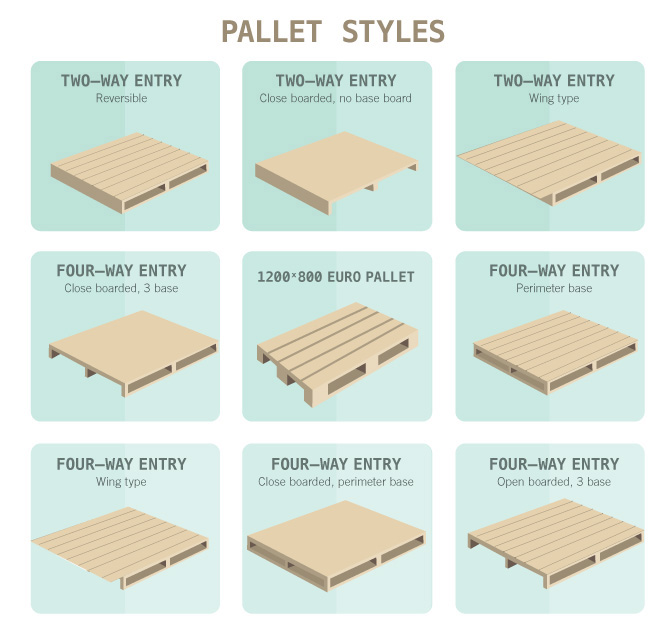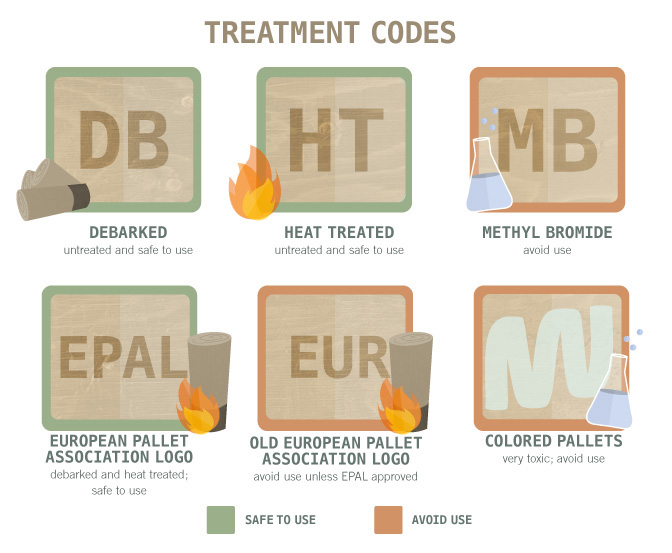Upcycling is an awesome hobby that can be designed for all ages, and extend the lifespan of some of your own personal treasures. We want to make sure that your work lasts a long time, and most importantly is safe to use. While some projects are simple that a child could make it others may be more involved with materials one may not be familiar with. A hot item to upcycle is the wood pallet, and can be turned into a number of things such as chairs, tables, bookshelves, etc. It can also be broken down to be used for smaller projects as well! Pallets though come with their own dangers that one should be aware of before working with.
https://www.fix.com/blog/preparing-wood-pallets-for-upcycling/
Pallets come in many shapes and sizes
Pallets are one of the first lines of defense against spills and mishaps during transportation. When selecting a pallet its important to check for any stains on the wood, for the wood can soak up any chemicals that may have spilled during transportation. Once you've found a spill free pallet then you'll need to check the side for stamps and seals. Just because there are no stains does not mean that the pallet wasn't treated with chemicals before traveling. Checking for stamps and seals can tell you where the pallet may have come from, or what it was shipping.
The two main stamps to look for are the IPPC logo and the treatment code. The IPPC logo means this pallet has been approved for safety even if it came from abroad. Without this logo this Pallet could have come form anywhere with anything, and is most likely not safe. The treatment code is next to the IPPC logo, and is extremely important when picking out a pallet. These codes tell you exactly what chemicals the wood has been treated with if any. Codes like MB or Methyl Bromide means the pallet has been soaked in a fungicide which could make you extremely ill when handling.
So where are some good places to find pallets then without too much hassle at sorting through them? Pet supplies stores are often a safe bet since they primarily use soft wood pallets with pet food. Newspaper or distribution centers are also pretty safe since they do not need chemical soaked pallets for transporting of newspapers or other reading materials. Construction sites or landscaping companies can be good, but be sure to check the pallets for a treatment code. Don't forget to ask for permission to take the pallets! Just because they are lying around outside doesn't mean they are free to use always ask first.
And finally here are some tips for prepping a pallet after picking them up!
- A hammer or a pry bar are great ways to separate a pallet without damaging the wood.
- Using a drill to remove screws and nails from a pallet is the most efficient way to do so.
- A nail punch is an even better way to get out those pesky nails, but it is not a common item in most households.
- Make sure to sand your work before painting. Even if you like the natural finish of the wood be sure to sad a little, or you can have large splinters sticking out.
- When cutting the wood try not to cut near nail holes over time the wood shrinks, and can create splitting when pressure is applied or released.
https://www.fix.com/blog/preparing-wood-pallets-for-upcycling/



No comments:
Post a Comment